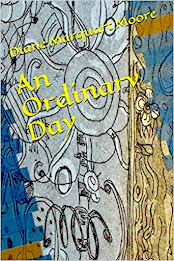
Most people I know consider their lives to be blessed. I was reading an article in a magazine sent to me by my sister-in-law (who is a Christian Scientist) about gratitude, and it set me to thinking about how many times I hear people saying, “I’m blessed.” I watch the evening news only to stay abreast of the economy, the weather, or for other educational purposes, but I often tune out the bad reports because I hear words of ingratitude and “unblessedness” grumbling in my ear. This isn’t a Polly Pureheart stance–I just get tired of hearing commentators grousing about the crumbling state of the world.
Even when I served as director of Solomon House and saw hundreds of needy people weekly, many of them left me with the words, “I’m blessed.” The phrase wasn’t and isn’t confined to any class of people, and I hear it repeated more often than I hear phrases of ingratitude. C.S. Lewis once described his mentor, the Scottish minister and writer George McDonald, as a man who was “hospitable as only the poor can be.” That statement has always resonated with me because I’ve often been the guest of such hospitality. I’ve also seen impoverished people give beyond their means, and when I ponder this thing called gratitude, I honestly don’t know many people who aren’t grateful–who don’t either volunteer time to good causes or open their checkbook to some charitable endeavor. I encounter giving people more frequently than I do miserly or ungrateful people. Recently, I read that volunteerism is burgeoning, that charitable giving is still strong, and the exception to all of this are the corrupt who have been toppled from their perches of power on Wall Street. I repeat, most people I encounter and know are grateful people.
Every Thanksgiving, I especially remember my godmother Dora and her husband Markham who contributed so much to my life and to the lives of my offspring. I wrote a tribute to Dora in the introduction to my book, THEIR ADVENTUROUS WILL, and Markham appears in many of my blogs and poems. When my oldest child was born, Dora entered my life in a cogent way when she re-introduced me to Anglicanism – true Anglicanism–the tradition of "a lively, changing body of thought," as Urban T. Holmes says, that embraces comprehensive thinking and invites all to come to the table. She was dismayed that I had fallen away from the church, so she began to send packages of books published in the old Church Teaching series, books by the mystic Evelyn Underhill, and by her mentor, C.S. Lewis. She also wrote long letters with a line that she repeated often about people losing everything except God and finally realizing that He had been with them all along. That was the essential blessing that my godparents gave to me–an intellectual nudge and their heartfelt wish for me to develop my spiritual life because, as Dora said in an inscription in one of Evelyn Underhill’s books, “we wish for you the fruits of the spirit above all else – for then, all riches will be yours.” In later years, these godparents made my life more comfortable materially, and I remember them daily for that assist, knowing that I’m blessed. However, the initial gift was one which Dora called (in the words of Evelyn Underhill) the “Radiance of Reality” or the inspiration to pursue the spiritual life. Even though she died before I entered the process to become an ordained deacon, she was probably the greatest influence on my decision to answer this call.
Among my possessions I have four blue leather journals Dora purchased on several of her trips to New York, journals in which she wrote sporadically and which included notes on the cost of “The Woman’s Home Companion” (a total of three cents) to poems she wrote during her many days abed with respiratory illnesses. Here’s one written on Oct. 31, 1939: “How quickly the present/swirls into the past/like so many leaves/fallen from a tree./ A sudden gust,/and we,/bereft and naked/must await/another Spring.”
Dora loved music and declared that it expanded the soul. During a Thanksgiving holiday in the 60’s that I spent in Blacksburg, Virginia, my godfather Markham built a roaring fire in the living room fireplace and put on a recording of “Madame Butterfly.” The three of us sat on the sofa and spent a quiet afternoon listening to opera while snow blanketed a weeping willow they had planted for me beside Dora’s study. Of music, Dora wrote: “At the sound of some music, we feel flooded with joy, as if we stood under an apple tree in full bloom, caught in a cascade of falling blossoms. When we become old, we lose our blossoms more freely–a sudden sorrow and we are nearly stripped. The older we are, the greater the toll, and how we do hang on to the blossoms–the symbol of life somehow…” Then, in December of 1940, Dora wrote: “Such beauty God distills from the human heart. As the harp must stand the tension of taut strings and the agony of vibrant plucking, so the individual and the human race must stand the strain of pressing on in faith and the slow despond or crashing defeat of human effort-and see through all of it the Divine plan of God, spun out like great music. I am listening to the mellow, poignant singing of Negro spirituals from Greensboro, North Carolina. How similar their spirituals are to the great Hebrew chants…”
I’ve been blessed by the influence of good and grateful people. If you google Dora Greenlaw Peacock, you’ll read about her contribution of a cookbook library to the Virginia Polytechnic Institute where Markham was head of the Dept. of English and Foreign Languages for many years. The portrait of Dora, shown above, was painted during the 40’s.





















